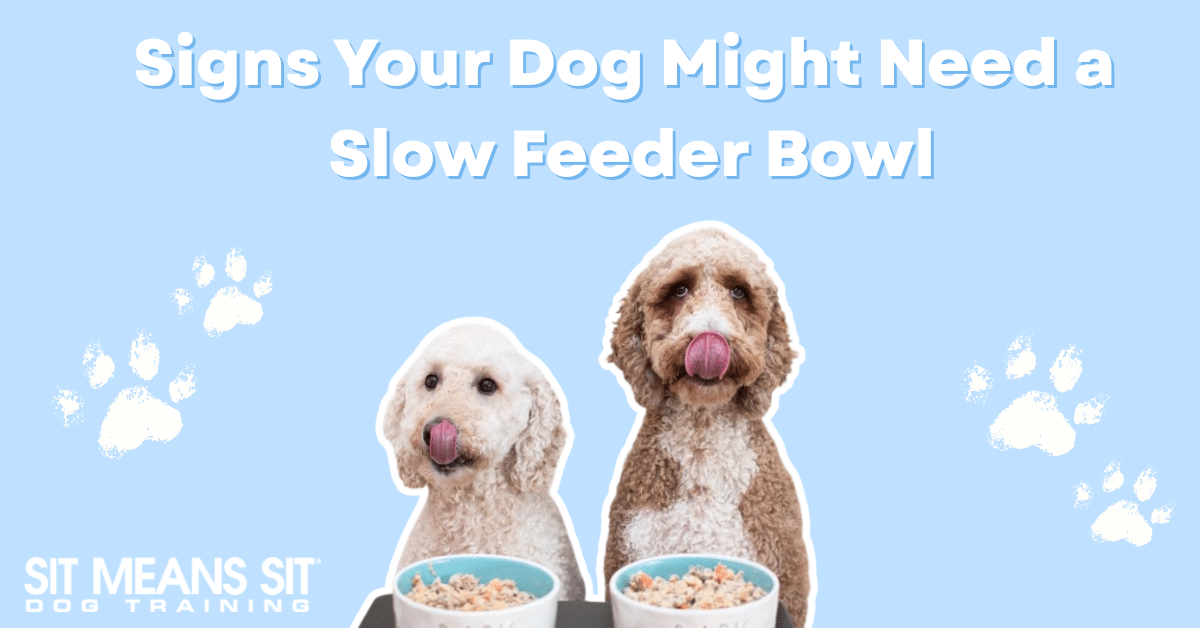Sometimes, when you’re really hungry, it’s hard to resist the urge to scarf down your food, and dogs are no different! Many pups instinctively gobble up their meals the moment the bowl hits the floor. While this might seem like a harmless quirk, eating too quickly can actually be dangerous for dogs. Rapid eating increases the risk of choking, gagging, vomiting, and even a life-threatening condition called bloat. Many pet owners don’t realize that the way their dog eats can be just as important as what they eat, and this is where the slow feeder bowl comes in.
Slow feeder bowls are designed to make mealtimes more of a challenge and encourage your dog to eat at a slower, healthier pace. And that’s just one of several reasons your dog might benefit from using one.
What is a Slow Feeder Bowl?
A slow feeder bowl turns your pup’s mealtime into a fun and rewarding challenge, like a little maze for their food! These bowls come in a variety of shapes and patterns, allowing you to find one that suits your dog’s specific eating habits. They help prevent choking, regurgitation, and bloating by slowing down how quickly your dog eats. Plus, they provide mental stimulation, reduce boredom, and make mealtime more engaging and enjoyable.
Signs Your Dog Needs a Slow Feeder Bowl
Your Dog is Full of Energy (and Mischief!)
Got a high-energy pup who is constantly looking for new ways to entertain themselves? Hyperactive dogs often need extra mental stimulation to stay content. Therefore, getting a slow feeder bowl won’t only make them work for their food, but also help them channel some of that energy into a productive (and tasty) task!
They Eat Like There’s No Tomorrow
Does your pup inhale their meals in under five minutes? As we mentioned before, rapid eating can lead to a variety of health issues like choking, bloating, and even vomiting. Slow feeder bowls are designed with ridges and patterns that encourage dogs to eat more slowly, which reduces the risk of gastrointestinal problems.
Tummy Troubles or a Sensitive Stomach
If your furry friend often experiences gas, burping, or an upset stomach after meals, eating too quickly might be the culprit. Slow feeder bowls force them to slow down and chew more, which helps food digest more easily. This can significantly reduce discomfort for dogs with sensitive stomachs.
Prone to Bloating or Regurgitation
Some breeds, especially deep-chested ones like Great Danes and German Shepherds, are more prone to bloat, a potentially life-threatening condition linked to fast eating. By controlling their eating speed, a slow feeder bowl can be a valuable tool in reducing the risk.
You Want to Add Mental Stimulation to Their Routine
Slow feeder bowls offer a little bit of a brain workout during mealtime. Most doggos love a challenge, and having to navigate the nooks and crannies of a slow feeder adds enrichment to their daily routine. It can help reduce boredom and even curb destructive behaviors by keeping their minds engaged.
Weight Management Concerns
Slower eating gives your pup time to recognize feelings of fullness, which can help prevent overeating and contribute to maintaining a healthy weight. This is particularly helpful for dogs who are always begging for more food.
When a Slow Feeder Bowl Isn’t the Best Choice
Picky Eaters
If mealtime already feels like a battle, introducing a slow feeder bowl may make things worse. For picky or food-shy pups, the added challenge of navigating a new bowl might feel more like an obstacle than a fun puzzle. Instead of encouraging healthy eating habits, it could discourage them from eating altogether. In these cases, it’s better to keep mealtime simple and focus on finding foods that Fido enjoys first.
Visual or Motor Struggles
Canines with visual impairments, arthritis, or limited mobility may find slow feeder bowls frustrating rather than enriching. Consider looking into elevated dog bowls instead, as this might be just what they need.
It Doesn’t Seem Necessary
If your dog naturally eats at a calm pace, has no digestive issues, and seems content with their current setup, a slow feeder bowl may not be necessary. While they have plenty of benefits, not every dog needs one. Sometimes, the simpler, the better!


